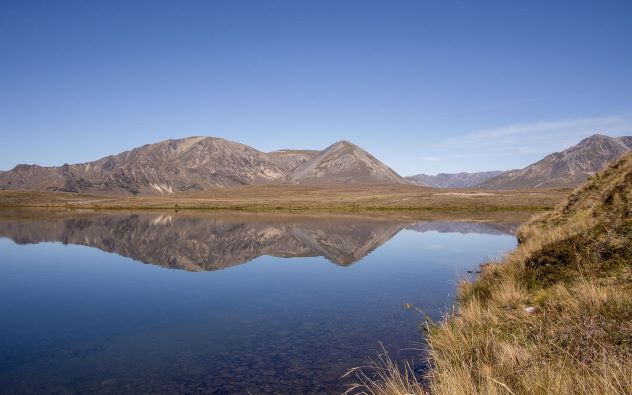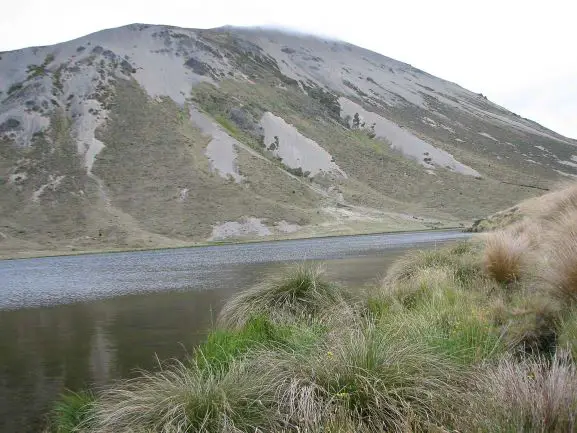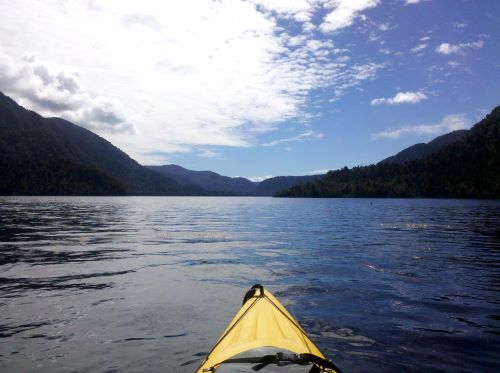Enjoy some of New Zealand’s best underrated trout fishing in Tarnsdale, Ashburton Lakes and Lake Moeraki. These lakes offer great fishing and breath taking vistas.
New Zealand is world famous for its trout fishing. Most trout anglers come to fish the rivers. In doing so, they are missing out on some spectacular lake fisheries. Below, I highlight several underrated lakes for the quality of the fishing they offer.
Tarnsdale

I hold the tarns and lakes at tarns dale close to my heart. They were where I discovered my passion for lake fishing and some of my most memorable fishing days have happened along their shoreline. The Tarnsdale lakes might offer some of the highest elevation trout fishing in New Zealand. They are 1000m (3200ft) above sea level. Due to the elevation the nights can be cold, and there can be frosts even in summer.
Some fishermen I have spoken to prefer to fish the tarns with some wind on the water. I personally prefer calm conditions. Makes spotting cruising trout simple.
Lake Sedegemere
There are four main tarns, the smallest and closest to the car park is Sedegemere. Like the name suggests, its shallow and largely reed chocked. It only contains a small number of trout, and I find casting to them in the extreme shallows difficult. I normally leave this tarn alone for others to try their luck on.
Bowscale Tarn.
Bowscale tarn is the largest and deepest ‘lake’ in the group. It takes about an hour to walk to from the carpark. Bowscale Tarn sees the most fishing pressure. It holds healthy numbers of mid size brown trout. On calm days cruising trout are easy to spot above the weed beds. Trout are widely distributed throughout the tarn. The northern shoreline is the deepest, it is possible to hide on the hillside behind and sight trout cruising the reed line.
The trout in Bowscale, well, all the tarns. Frequently swim in a beat. So patience is key. Ignore the hungry sandflies and wait until the trout is swimming away before placing your flies a few feet ahead of them. By New Zealand trout standards they are very forgiving. Even when spooked they often out feeding again half an hour later.
The best part about Bowscale is that the entire shoreline is walkable, and other than a small outlet stream you can keep dry feet.
Fish Lake

Fish Lake is hidden away over a crest in a hill. There is no track to Fish lake. So basic navigation skills are required to find it. Unlike Bowscale and Island which drains into the Clarence River, Fish Lake drains into the Wairau.
Fish Lake is a Jewel. Even on the busiest of summers weekend chances are you can find solitude there. It is the most sheltered of the Tarns, but is still exposed. Trout numbers are decent, and I personally find them more difficult to catch than Bowscale. Stick with fishing the sloping shoreline and stay away from the marsh located at the western end. While the pools of water between the reeds hold trout, walking is very difficult, and the going is slow.
Island Lake
Island Lake is the second to largest and most remote lake in the group. Across the tussock flats it might seem close but is quite a walk from the car park. I have only made the effort to reach it a couple of times and results were disappointing. Island Lake is very shallow, and despite seeing little fishing pressure the trout there are extremely flighty. Public access is not always guaranteed, so worth checking with the South Marlborough office of department of conservation before making a trip.
How to access
Tarnsdale is very remote. There is no services or reception. The nearest town Hamner Springs is over an hour away. I consider it paradise.
Tarnsdale is accessible from the Hanmer to St Arnaud road. The council maintains the gravel road from from Hanmer Springs to a high standard. Most 2WD cars can handle it, but more ground clearance is an advantage. I have checked with several rental companies and none had the Hanmer to St Arnaud road on their exclusion list. Due to the narrow nature of the road, the department of conservation advise against taking campervans in.
The improved gravel road ends near the Tarnsdale carpark, as the road winds through rainbow station it deteriorates into a 4wd track. There are several slips and ford crossings. Occasionally it is passable in a car, but more often I was pleased to be driving a high clearance 4wd.
The road through Rainbow station is gorgeous. It winds alongside the Wairau River. Which prior to the 1990’s use to be an excellent backcountry fishery. Since then severe weather events and increased angling pressure has seen the fishery deteriorate. The Rainbow road is tolled, and only open to the public over the summer months.
For up-to-date road information, check the DOC website.
Where to Stay
There is a DOC camp-ground and hut at the carpark. The hut known as the Sedgemere Sleep Out contains 6 bunks and operates on a first come, first serve basis. It costs 1 standard hut ticket per night which at the time of writing is $5. Camping beside the hut is free.
Several more DOC huts and camp grounds exist along the access road. The largest camping area is at Lake Tennyson. The outlet of which provides an excellent hatch just on dusk.
If after more comfort, the nearest town is Hanmer Springs. Which is 55km or about an hour’s drive away. In the other direction, St Arnaud at Lake Rotoiti is 57 km away on the 4wd toll road.
Ashburton Lake Group
The backdrop of the Southern Alps as you drive towards the Ashburton lakes is breath taking. These lakes are only well known by anglers in the Canterbury region.
These lakes are among my favourite in the South Island, The Southern Alps in the distance makes for a breath-taking backdrop, So even a disappointing fishing day is made worthwhile due to the scenery.
Many trout fishermen, drive straight past them heading to the high country rivers and streams. They are missing out because the Ashburton lakes offer excellent high country brown trout fishing with some rainbow trout also present. Quinnat salmon can at times be caught in Lake Heron.
There is even a small population of Brook trout. The only New Zealand location where decent size brooks exist. The exact location I am going to keep a secret, but the details are available online. Brown trout have found their way into the lake, so there is some fear for the fishery.
There are nine major lakes in the Ashburton group, and most of them fish similarly.
Lake Clearwater / Lake Emma/ Heron Lake
These are the largest lakes in the group, they all contain healthy populations of trout. On calm days it is possible to sight cruising trout from the shore. The willows near the campground are a popular location for stalking cruising trout over the summer months.
Lake Camp is popular with water skiing so is the less peaceful lake to fish. The exposed lakes are difficult to fish once the wind picks up.
How to fish the Ashburton lakes?
I like to suspend a small pheasant tail nymph beneath a black gnat. The cruising trout see the black gnat on the surface so speed in to investigate. Often the trout will ignore the gnat, but will grab the nymph after rejecting the dry. I find it to be a very successful combination when fishing shoreline weed beds.
For dry flies, I like to fish a Royal Wulff or Black gnat around overhanging vegetation. In the evenings, I change to a twilight beauty.
When nymph fishing, I keep things simple by using the most popular nymph patterns in New Zealand, the Pheasant tail or hare and copper.
Streamers are also effective when fished blind. I like wooly buggers, grey ghost, rabbit flies and Hamill’s killer. Most bully imitating streamer should work fine.
When spin fishing, I prefer minnow imitation lures such as Jerkbaits. Rapala in brown trout pattern seems to work well. Sinking versions are good for fishing near the bottom. When the wind is blowing fishing a Toby or Tasmania devil can help punch into the chop.
Maori Lake
The Maori Lakes are among the more interesting lakes in the Ashburton group. Covering approximately 182 hectares (450 acres) they are much larger than they appear from the road. Less than half that area contains open water suitable for fishing.
The Maori Lakes are shallow and surrounded with a marshy unstable shoreline. The marshy shoreline supports large thickets of Rapou and Carex reeds. Casting and walking can be difficult. Under the water surface, thick weed beds cover much of the lake floor.
Trout are difficult to spot, and when hooked they instinctively swim towards the cover of the weeds. This is not a lake for ultralight tackle, break offs are frequent. Only a few areas are fishable from the shore, and it takes some walking to find them. Many locals choose to fish from anchored dinghies or kayaks. Thick weed beds cover much of these shallow lakes.
In most cases, I will not recommend such a difficult to fish lake. But the nutrient rich waters hold a secret. There is a surprising number of large trout. There might even be a trophy lurking beneath the weed beds.
These large trout are best fished for at night and with streamers. Most streamer patterns can bring success. I am personally a fine of wooly buggers or rabbit flies. More streamlined flies such as the Black Ghost, or New Zealand’s own Hamills Killer are also deadly.
Watch at for the resident eels, they are even larger than the trout.
Where to stay when fishing the Ashburton Lakes?
There are camp grounds near most of the lakes.
When I want a warm shower and more comfort I like to stay in Mount Somers. There is an affordable full service camping ground and some decent motel available.
The larger town of Methven, about an hours drive away is a bit of a trout and salmon fishing hub. So can also work as a base for exploring the Canterbury foothills. There is also a quality small fly fishing shop located there.
Lake Moeraki

Lake Moeraki might just be the most productive New Zealand lake I have ever fished. One warm spring morning, I was lazily drifting across the shallower western end of the lake. There quite a few logs and branches break the surface. Without the need to exaggerate. Every cast to likely looking cover was getting hit. The lure on that day was a floating Rapala. I am sure most minnow style lures will bring success.
Within the prehistoric South Westland rainforests, Lake Moeraki could be from a different age. I could imagine small dinosaurs or giant moas foraging among the moss draped Ancient trees. Fishing surrounded by virgin bush and the majestic southern alps makes for a postcard worthy image. There will not be much time to enjoy the scenery because hungry brown trout are waiting to be caught.
How to fish lake Moeraki
Shore fishing can be difficult because of the vegetation. It is best fished from a boat; I find a fishing kayak ideal, but the somewhat small size of the lake makes it possible to fish from almost any craft. Float Tubes and pack rafts are lightweight alternatives and perfect for working the shorelines.
When fly fishing, I blind fish streamers around any structure. While the trout might not be large, they are many and willing to feed. I have often seen trout raising so the trout will certainly take a dry.
At the head of the lake, the Moeraki River forms a shallow delta. Brown trout patrol the shallows. These can be stalked from either onshore or by boat. A nymph suspended beneath a dry works particularly well.
I waded a fair distance up the Moeraki River itself but did not see any trout.
How to access
Accessing Lake Moeraki is both simple and difficult. It is located beside State Highway 6 so reaching the water is easy. But there is poor shoreline access. thick Indigenous vegetation hugs the small beaches. Several boat ramps provide access from the state highway
Anglers can access the upper lake from the northernmost boat ramp. When lake levels are low, it is possible to wade and reach the delta. There are some deeper sections, so take care when wading.
Where to stay?
The luxurious Wilderness Lodge Lake Moeraki is located right by the outlet of the lake. This upmarket lodge does not come cheap, but it provides unparalleled access to the lake for traveling anglers. It even provides kayaks for guests to use.
A further kilometer up the road is Lake Paringa Campsite, which provides tent and campervan sites for $15 per night. Nearby is my personal pick in Lake Paringa Lodge, which provides cabin style accommodation right on the shore of Lake Paringa. Kayaks are also available for guests to use.
Lake Paringa itself is not a bad trout fishery, just lacks the same number of fish as found in Lake Moeraki.
The nearest towns are Haast to the South, and the touristy Fox Glacier to the north.
